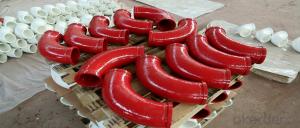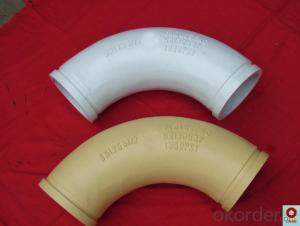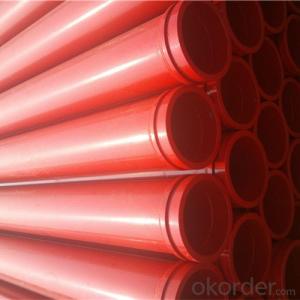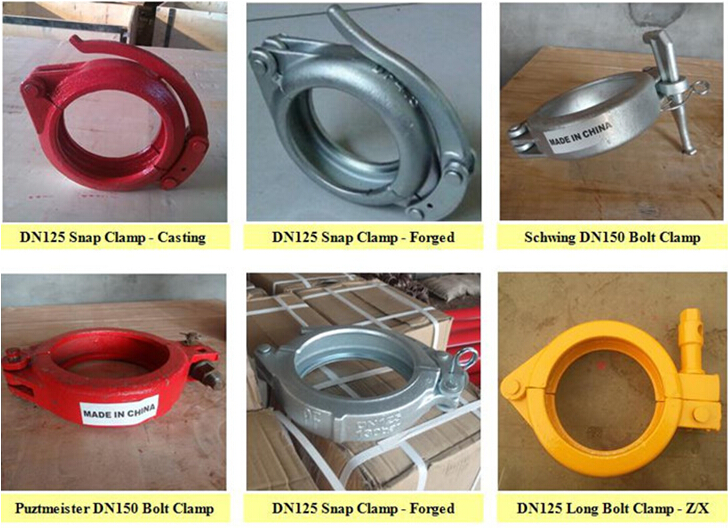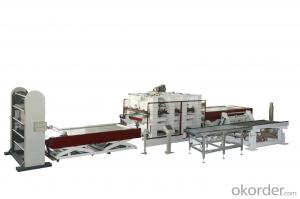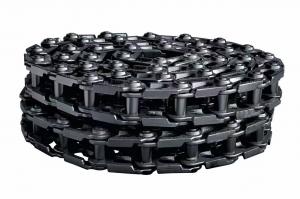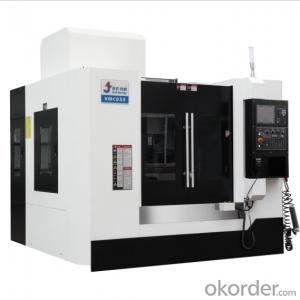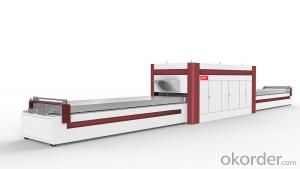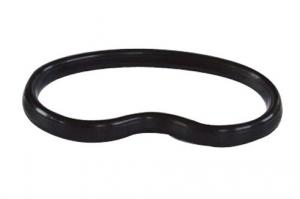Concrete Pump Clamp Snap Coupling DN125
- Loading Port:
- Tianjin
- Payment Terms:
- TT or LC
- Min Order Qty:
- 10 pc
- Supply Capability:
- 10000 pc/month
OKorder Service Pledge
OKorder Financial Service
You Might Also Like
Product Description:
Name:CONCRETE PUMP CLAMP SNAP Coupling DN125
Type: Snap coupling, Bolt coupling, Wedge Coupling, adjustable or mounting type
Dimensions: DN125, 5" DN150, 6'';
Process: Casting or Forging.
Surface treatment: Painted or Galvanized.
Notes: total series of concrete pump clamp for different brand concrete pump(PUTZMEISTER, SCHWING, CIFA, SANY, ZOOMLION, IHI, KYOKUTO Etc) available from us, such as Snap coupling, Bolt coupling, Wedge Coupling, adjustable or mounting type .
Scope of Application of the Equipment
CONCRETE PUMP CLAMP SNAP Coupling DN125widely used on concrete pump truck, concrete placing boom, trailer concrete pump etc, for concrete delivery pipe connection.
Our concrete pump clamps have been successfully exported to many countries from 1998, Our main markets as below: Middle East, Southeast Asia, America, Brazil, Italy, Russia, South Africa etc
Aiming at the largest concrete pump parts manufacturer, and reliable, professional supplier in China, we can supply concrete pump elbows, delivery pipes, casting or forging couplings, end rubber hoses, rubber pistons, tungsten wear plates, delivery cylinders, and other hydraulic parts, one stop service for your concrete pump parts and accessory business.
Product Advantages:
Forged Snap Coupling DN125 are durable, strong, and resists corrosion.
Main Product Features:
· Premium quality
· Prompt delivery & seaworthy packing (10-20 days after receiving deposit)
Reliable performance
Easy and smooth operation
High safety.
· Professional Service
· Competitive pricing
Product Specifications:
Every 300pcs put in one seaworthy wooden box, and 20 boxes in one 20feet container.
FAQ:
Q1: Why buy Materials & Equipment from us?
A1: All products are through its ISO certifications, adhere to the highest standards and a commitment to supply chain safety and customer satisfaction.
Q2: How do we guarantee the quality of our products?
A2: We have established an advanced quality management system which conducts strict quality tests at every step, from raw materials to the final product. At the same time, we provide extensive follow-up service assurances as required.
Q3: How soon can we receive the product after purchase?
A3: Within three days of placing an order, we will begin production. The specific shipping date is dependent upon international and government factors, but is typically 10 to 30 workdays.
Q4: If we can produce some CONCRETE PUMP CLAMP SNAP Coupling DN125 according to customers request?
A4: Yes, we can produce CONCRETE PUMP CLAMP SNAP Coupling DN125 according to the difference country situations and different concrete pump to make it suitable to the market and customers. We have very professional technical team to make the design.
Q5: How to make a quick resolution for after service?
A5:We have overseas branches all-around of world, IF needed, the seller shall dispatch 2 engineers to the buyer's site for supervision of training. The buyer shall make available of necessary facilities &skilled personnel at site for training.
Images:
- Q:How often should concrete pump accumulators be inspected and replaced?
- Concrete pump accumulators should be inspected on a regular basis to ensure their proper functioning and to prevent any potential issues. The frequency of inspections will depend on various factors such as the manufacturer's recommendations, the intensity of use, and the specific conditions in which the concrete pump is operating. As a general guideline, it is recommended to inspect concrete pump accumulators at least once every six months or after every 500 hours of operation, whichever comes first. However, if the pump is used more frequently or operates under harsh conditions, more frequent inspections may be necessary. During the inspection, the accumulators should be checked for any visible signs of wear or damage, such as leaks, cracks, or corrosion. Additionally, the pressure levels and performance of the accumulators should be tested to ensure they meet the required standards. When it comes to replacement, it is best to follow the manufacturer's recommendations. Typically, accumulators have a lifespan of around 3 to 5 years, but this can vary depending on factors such as maintenance, usage, and environmental conditions. If any significant issues are identified during the inspection or if the accumulators have reached their recommended lifespan, it is advisable to replace them promptly to avoid potential failures and ensure the safety and efficiency of the concrete pump.
- Q:Can concrete pump spare parts be inspected or certified by third-party organizations?
- Concrete pump spare parts have the potential to undergo inspection and certification from third-party organizations. These organizations are usually independent and possess the necessary knowledge and resources to assess the quality, performance, and safety of these spare parts. They adhere to industry-specific standards and guidelines while conducting inspections, tests, and audits to ascertain whether the spare parts meet the required criteria. The certification provided by these third-party organizations serves as a guarantee to customers that the spare parts have been evaluated and found to be in line with the relevant standards. This helps to foster trust and confidence in the products, ensuring their reliability and suitability for concrete pump usage.
- Q:What is the role of a concrete pump cylinder in a pumping system?
- The role of a concrete pump cylinder in a pumping system is to generate the necessary hydraulic pressure to push the concrete through the pipeline. The cylinder works by converting the mechanical energy from the pump into hydraulic energy, allowing for efficient and controlled movement of the concrete.
- Q:Can a concrete pump pipe be repaired or should it be replaced?
- A concrete pump pipe can be repaired in some cases, but it ultimately depends on the extent of damage and the specific circumstances. Minor cracks or small sections of damage can often be repaired using specialized techniques such as welding or epoxy injections. However, if the damage is widespread, severe, or compromises the structural integrity of the pipe, it may be more cost-effective and safer to replace the entire pipe. It is important to assess the condition of the concrete pump pipe thoroughly before deciding whether to repair or replace it. Factors such as the age of the pipe, the overall condition of the pump, and the frequency of use should be taken into consideration. Consulting with a professional or an experienced concrete pump technician is advisable to determine the best course of action. In conclusion, while repairs can be made to a concrete pump pipe, the decision to repair or replace should be based on the extent of damage, cost-effectiveness, and safety considerations.
- Q:What is the function of a concrete pump control valve?
- The function of a concrete pump control valve is to regulate the flow and pressure of the concrete being pumped, allowing for precise control and efficient delivery of the material to the desired location.
- Q:What are the different types of concrete pump control system sensors?
- Concrete pump control systems utilize a variety of sensors to ensure smooth and efficient operation. These sensors are specifically designed to monitor different aspects of the pump's performance and provide real-time feedback to the control system. Common types of sensors used in concrete pump control systems include: 1. Pressure Sensors: These sensors measure the concrete pressure during pumping. They are typically installed in the discharge line and are crucial in preventing over-pressurization and potential damage to the pump or pipeline. 2. Flow Sensors: Flow sensors measure the rate at which concrete flows through the system. By monitoring the volume of concrete passing through per unit of time, these sensors enable the control system to regulate the pump's speed and output accordingly. 3. Level Sensors: Level sensors monitor the concrete level in the hopper or storage tank. They provide information about the concrete volume to prevent the pump from running dry or becoming overloaded, thus preventing pump cavitation or blockages. 4. Proximity Sensors: Proximity sensors detect the position of moving parts in the pump system, such as the boom or outriggers. They ensure safe operation by providing feedback to the control system and preventing collisions or obstructions. 5. Temperature Sensors: Temperature sensors monitor the concrete mix temperature. They help maintain the desired temperature range during pumping, which is crucial for workability and curing. Optimal concrete temperature contributes to the quality of the final product. In summary, these sensors work in harmony to provide precise feedback to the control system, ensuring efficient and safe operation of the concrete pump. By continuously monitoring and adjusting various parameters, these sensors optimize pumping performance and enhance productivity in concrete placement projects.
- Q:Are there any specific cleaning procedures for concrete pump spare parts?
- Yes, there are specific cleaning procedures for concrete pump spare parts. It is important to ensure that these parts are clean and free from any dirt or debris to maintain their efficiency and longevity. Here are some general guidelines to follow when cleaning concrete pump spare parts: 1. Safety First: Before starting the cleaning process, make sure to wear appropriate personal protective equipment (PPE) such as gloves and safety goggles to protect yourself from any potential hazards. 2. Disconnect Power: Before cleaning any electrical or mechanical parts, make sure to disconnect the power supply to avoid any accidents. 3. Remove Excess Dirt: Use a brush or a dry cloth to remove any loose dirt or debris from the surface of the spare parts. This will make the cleaning process more effective. 4. Use Appropriate Cleaning Solution: Depending on the type of spare parts and the level of dirt, choose an appropriate cleaning solution. Mild detergents or soapy water are generally safe to use. Avoid using harsh chemicals or solvents that may damage the parts. 5. Scrub and Rinse: Dip a clean cloth or sponge into the cleaning solution and gently scrub the spare parts to remove any stubborn dirt or stains. Rinse the parts thoroughly with clean water to remove any residue of the cleaning solution. 6. Dry Completely: After rinsing, make sure to dry the spare parts thoroughly using a clean cloth or by air-drying. Moisture can lead to rust or corrosion, so it is important to ensure complete drying. 7. Lubricate Moving Parts: If the spare parts have any moving components, such as bearings or gears, apply an appropriate lubricant to ensure smooth operation. This will help prevent wear and tear and extend the lifespan of the parts. 8. Regular Maintenance: To keep the concrete pump spare parts in optimal condition, it is recommended to perform regular cleaning and maintenance. Inspect them periodically for any signs of damage or wear and replace them if necessary. By following these specific cleaning procedures, you can effectively clean and maintain the concrete pump spare parts, ensuring their reliability and longevity.
- Q:Are there any warranties or guarantees on concrete pump spare parts?
- Yes, there are warranties and guarantees offered on concrete pump spare parts. Many manufacturers and suppliers provide warranties on their products to ensure the quality and performance of the spare parts. These warranties may vary in duration and coverage depending on the specific supplier or manufacturer. It is important to check with the supplier or manufacturer to understand the terms and conditions of the warranty or guarantee before purchasing the concrete pump spare parts. Additionally, some suppliers may also offer extended warranties or guarantees for an additional cost, providing further peace of mind to the customers.
- Q:What are the different types of concrete pump wear rings?
- There are primarily two types of concrete pump wear rings: stationary wear rings and rotating wear rings. Stationary wear rings are fixed in position and provide a surface for the rotating wear ring to slide against. Rotating wear rings, on the other hand, are designed to spin with the impeller and prevent direct contact between the impeller and stationary wear ring, reducing friction and extending the life of the pump.
- Q:How often should hydraulic oil filters be replaced in a concrete pump?
- Hydraulic oil filters in a concrete pump should be replaced regularly according to the manufacturer's recommendations. Typically, it is recommended to replace hydraulic oil filters every 500 to 1,000 hours of operation or annually, whichever comes first. However, the specific replacement frequency may vary based on factors such as the operating conditions, environment, and the quality of hydraulic oil used. Regular maintenance and monitoring of the filter's condition can help determine the appropriate replacement interval to ensure efficient and reliable performance of the concrete pump.
1. Manufacturer Overview |
|
|---|---|
| Location | |
| Year Established | |
| Annual Output Value | |
| Main Markets | |
| Company Certifications | |
2. Manufacturer Certificates |
|
|---|---|
| a) Certification Name | |
| Range | |
| Reference | |
| Validity Period | |
3. Manufacturer Capability |
|
|---|---|
| a)Trade Capacity | |
| Nearest Port | |
| Export Percentage | |
| No.of Employees in Trade Department | |
| Language Spoken: | |
| b)Factory Information | |
| Factory Size: | |
| No. of Production Lines | |
| Contract Manufacturing | |
| Product Price Range | |
Send your message to us
Concrete Pump Clamp Snap Coupling DN125
- Loading Port:
- Tianjin
- Payment Terms:
- TT or LC
- Min Order Qty:
- 10 pc
- Supply Capability:
- 10000 pc/month
OKorder Service Pledge
OKorder Financial Service
Similar products
New products
Hot products
Hot Searches
Related keywords







